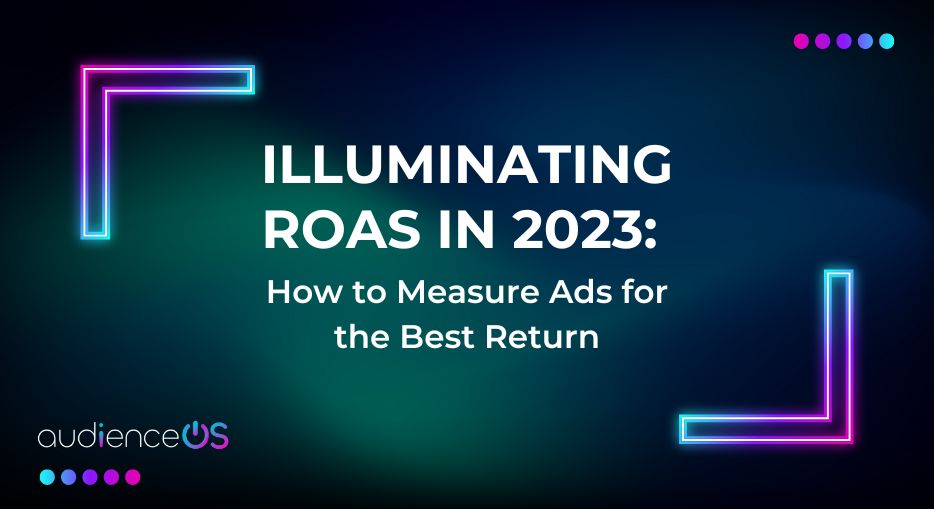As the digital marketing landscape changes, the key metrics we pay attention to are a set point to measure our success. One principle remains unchanging: the essential role of Return on Ad Spend (ROAS). This metric is the backbone of successful advertising campaigns, granting companies the power to assess the profitability of their endeavors. let’s demystify ROAS, reveal its significance in the current advertising landscape, and illustrate how to leverage it efficiently.
ROAS is a critical marketing tool that measures the profitability of an ad campaign. It quantifies the revenue a company accrues for every dollar invested in advertising. This metric embodies a campaign’s return on investment (ROI), specifically catering to advertising expenses. The simplicity of ROAS calculation – the ratio of revenue generated to total ad spend – facilitates its utilization.
For instance, a ROAS of 5:1 signifies that every advertising dollar procures five dollars in revenue.
Measuring Ad Effectiveness
Grasping ROAS is essential in the modern era by the necessity for digital marketing. As businesses strive to optimize their marketing expenditure, ROAS steers them, spotlighting the channels and campaigns that yield superior returns, and thereby guiding budget allocation. It provides insights into ad efficiency, enabling businesses to comprehend which ads strike a chord with their target audience, which placements yield the best outcomes, and which creatives stimulate the most interaction.
Proving Marketing Value to Stakeholders
Beyond calculating returns, ROAS assumes a pivotal role in reporting and accountability. In the current data-centric environment, stakeholders require convincing evidence that marketing investments generate returns. ROAS presents a tangible metric linking marketing endeavors to revenue, authenticating marketing’s worth to stakeholders and guiding future advertising spend decisions.
Guiding Marketing Strategy
The position of ROAS in the marketing strategy is paramount. It influences pivotal decisions and shapes an organization’s marketing blueprint. ROAS enables a comprehensive evaluation of campaigns, assisting businesses in distinguishing between profitable and underperforming ones, leading to refined strategies. It also aids in budget allocation by identifying high-performing ads, ensuring a more focused utilization of advertising spend.
Benchmarking Performance
ROAS serves as a metric for gauging marketing performance. Businesses can set ROAS targets for campaigns, track advancements, and tweak strategies as required. This fosters a proactive marketing approach, powered by strategic goal setting and continuous enhancement. Additionally, ROAS influences product pricing and profitability decisions. A dismal ROAS might suggest the necessity to adjust pricing strategies or cut costs relative to ad spend.
Shaping Customer Acquisition
ROAS also plays a crucial role in shaping customer acquisition strategies. By analyzing ROAS across different customer segments, businesses can focus their acquisition endeavors on the most profitable segments, thereby maximizing customer lifetime value.
ROAS serves a myriad of functions in marketing strategy, from evaluating individual campaign performance to directing budget allocation, guiding pricing decisions, and refining customer acquisition strategies. A profound understanding of ROAS enables businesses to enhance marketing efficacy and drive sustainable growth.
Calculating ROAS
The process of calculating ROAS is straightforward.
The fundamental formula is ROAS = (Revenue from Ad Campaign) / (Cost of Ad Campaign).
However, applying this calculation practically requires a meticulous approach that considers what constitutes revenue and cost. This could include aspects such as product sales, service fees, subscriptions, media spend, agency fees, and technology expenses. It’s also crucial to factor in the timing of returns, as brand awareness or customer loyalty campaigns might not yield immediate results.
Interpreting ROAS
ROAS isn’t a static measure. Many factors such as attribution models, campaign goals, customer lifetime value, marketing channels, external influences, and non-monetary returns impact ROAS. It’s critical to consider these factors for an accurate interpretation of your campaign’s success. Hence, ROAS isn’t merely a mathematical calculation but a strategic instrument to evaluate advertising campaigns and direct marketing decisions.
Optimizing ROAS
Optimizing ROAS demands a blend of data analysis, targeted marketing, creative strategy, and continual optimization. First, harness first-party data, information directly gathered from your customers, to gain valuable insights into their preferences and behaviors. This will empower you to customize your ad campaigns, thereby amplifying conversions and maximizing ROAS.
Identifying your audience based on shared characteristics such as demographics or interests can facilitate personalized ads that resonate more with the viewers, leading to increased engagement and conversion rates, thereby boosting ROAS. The design and copy of your ads also significantly influence campaign success. Ads that captivate and engage viewers, communicating a clear value proposition, can increase conversion rates and maximize ROAS.
In today’s multi-channel digital spaces, customers interact with businesses across various platforms. Adopting a multichannel advertising approach to reach customers wherever they are, ensuring a consistent experience across touchpoints, can bolster conversion and customer retention rates, thereby enhancing ROAS.
Continuous testing and optimization are key. Carry out A/B testing on various ad elements, analyze the outcomes, and fine-tune your strategy based on what works best. Real-time monitoring facilitates quick identification and resolution of issues, ensuring efficient utilization of ad spend.
Understanding and maximizing ROAS is pivotal in the digital advertising ecosystem. With the right strategies and adaptability, you can overcome the challenges and ensure your advertising remains impactful amidst the changing digital landscape. Always remember, a high ROAS not only reflects successful advertising campaigns but also facilitates more precise marketing budget allocation and strategy optimization. It is the compass that guides you towards your dream outcome: thriving in today’s digital age, transforming challenges into opportunities, and ensuring your ad spends procure maximum returns.

